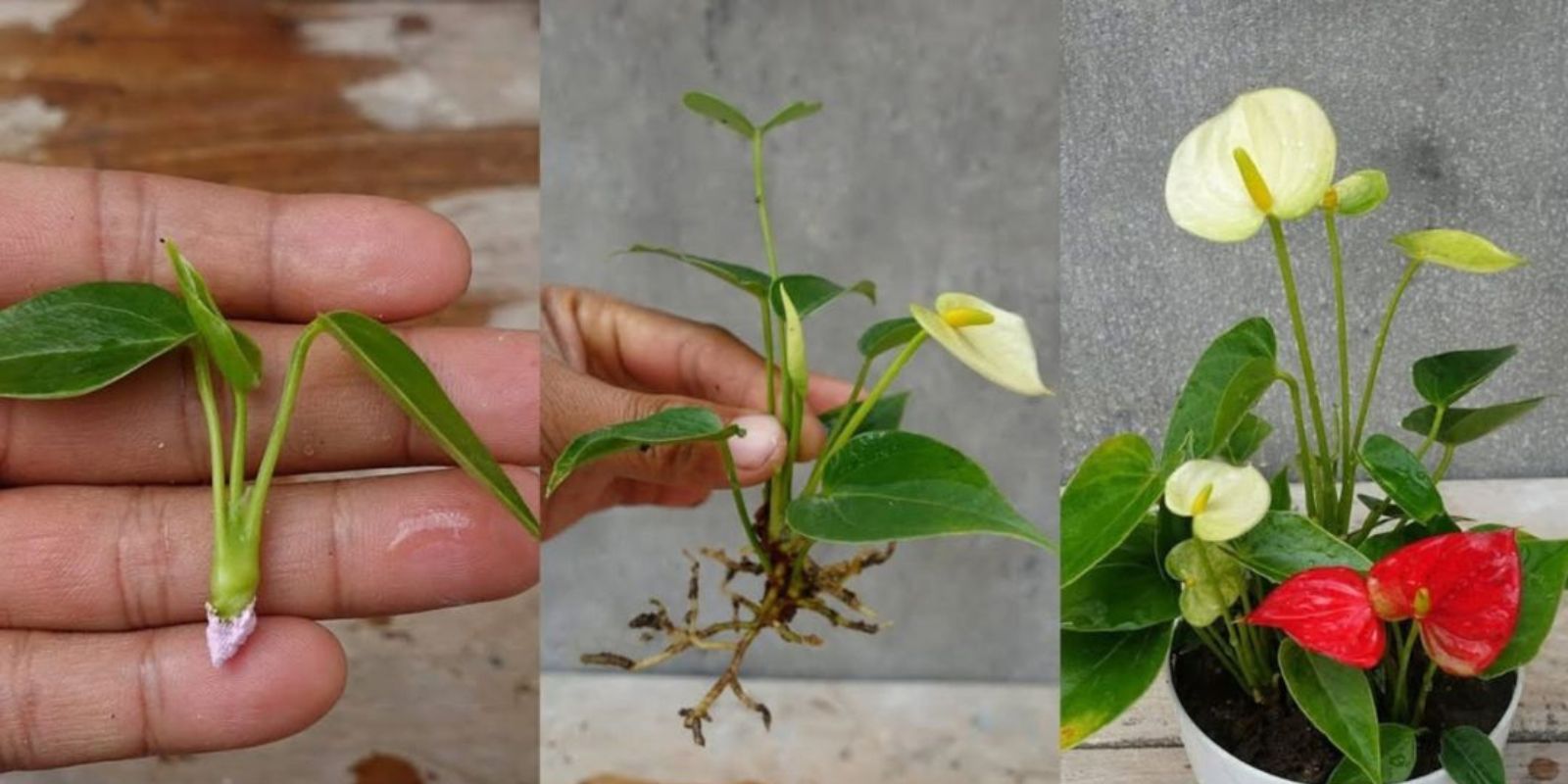Anthuriums, often called “Flamingo Flowers” or “Painter’s Palette,” are among the most elegant tropical plants you can grow indoors. Known for their glossy green foliage and brightly colored spathes, Anthuriums add a touch of sophistication and vibrancy to any home. However, their stunning appearance requires proper care to keep them thriving. This article provides an in-depth guide to caring for your Anthurium, ensuring it remains a striking centerpiece in your indoor garden.
Understanding Anthurium
Native to tropical rainforests in Central and South America, Anthuriums belong to the Araceae family. Their colorful “flowers” are actually modified leaves, called spathes, which surround a spadix where tiny flowers bloom. Anthuriums are often grown as ornamental houseplants due to their exotic looks and relatively easy care.
While resilient, Anthuriums have specific needs to mimic their natural tropical environment. Let’s explore these requirements in detail.
1. Light: Bright, Indirect Sunlight
Anthuriums love bright, filtered light but cannot tolerate direct sunlight, which can scorch their leaves. Ideally, place your Anthurium near an east- or north-facing window where it can bask in soft, indirect light.
- Avoid low light: While Anthuriums can survive in dimmer conditions, their growth and flowering may slow significantly.
- Supplement with artificial light: If natural light is insufficient, use grow lights to keep your plant happy.
2. Watering: Strike the Perfect Balance
Anthuriums prefer consistently moist soil but are prone to root rot if overwatered. Water your plant only when the top 1-2 inches of soil feel dry.
- Frequency: Water once a week during the growing season and reduce watering in winter.
- Drainage: Ensure your pot has drainage holes and avoid letting the plant sit in standing water.
3. Humidity: Keep It High
As tropical plants, Anthuriums thrive in high humidity levels of 50-80%. Low humidity can lead to browning leaf edges or reduced flowering.
- Misting: Lightly mist the plant every couple of days to maintain moisture.
- Humidifier: Use a humidifier for consistent humidity, especially during dry seasons.
- Grouping: Place Anthuriums near other tropical plants to create a microclimate with higher humidity.
4. Temperature: Warm and Cozy
Anthuriums prefer warm temperatures between 65-80°F (18-27°C). Protect them from drafts, air conditioners, and sudden temperature changes.
- Winter care: Keep the plant away from windowsills or doors where it may be exposed to cold drafts.
- Consistency: Sudden drops below 55°F (13°C) can stunt growth or harm the plant.
5. Soil: Well-Draining and Nutrient-Rich
Anthuriums need a loose, well-draining soil mix that retains some moisture while allowing excess water to escape.
- Recommended mix: Use a blend of peat moss, orchid bark, and perlite.
- Acidity: Anthuriums prefer slightly acidic soil with a pH of 5.5-6.5.
6. Fertilizing: Feed for Growth
To encourage healthy growth and vibrant blooms, fertilize your Anthurium during its active growing season (spring and summer).
- Frequency: Apply a balanced liquid fertilizer every 6-8 weeks.
- Dilution: Use fertilizer at half strength to avoid overfeeding.
- Caution: Avoid fertilizing during the dormant winter months.
7. Repotting: Room to Grow
Anthuriums need to be repotted every 2-3 years to prevent overcrowding and refresh their soil. Signs it’s time to repot include roots growing out of the drainage holes or slowed growth.
- Timing: Repot in spring or early summer.
- Pot size: Choose a pot 1-2 inches larger in diameter than the current one.
8. Cleaning and Pruning
Regular cleaning keeps your Anthurium looking pristine and healthy. Dust on leaves can hinder photosynthesis.
- Leaf cleaning: Wipe leaves with a damp cloth every few weeks.
- Pruning: Remove yellowing or damaged leaves and spent blooms to direct energy to new growth.
9. Common Problems and Solutions
Yellow Leaves
- Cause: Overwatering or poor drainage.
- Solution: Let the soil dry out and check for clogged drainage holes.
Brown Leaf Tips
- Cause: Low humidity or underwatering.
- Solution: Increase humidity and water consistently.
Lack of Flowers
- Cause: Insufficient light or nutrients.
- Solution: Move to a brighter spot and feed with a phosphorus-rich fertilizer.
Pest Issues
- Common pests: Spider mites, mealybugs, and aphids.
- Solution: Wipe leaves with insecticidal soap or neem oil.
10. Benefits of Anthurium as a Houseplant
- Air purification: Anthuriums are known to remove toxins like formaldehyde and ammonia from the air.
- Aesthetic appeal: Their exotic, vibrant flowers brighten up any indoor space.
- Longevity: With proper care, Anthuriums can live and bloom for years.
Interactive Care Tip
Caring for Anthuriums can be deeply rewarding. Have you tried misting or using a humidifier for your tropical plants? Share your Anthurium care routine or challenges in the comments below! Let’s grow together!
Final Thoughts
Anthuriums are the epitome of tropical beauty and elegance. While they demand specific care, their long-lasting blooms and striking foliage make the effort worthwhile. By following the steps outlined in this guide, you’ll be able to enjoy the vibrant charm of Anthuriums in your home for years to come.
Ready to elevate your indoor garden with Anthuriums? Start today and watch your tropical paradise thrive! 🌿🌺

